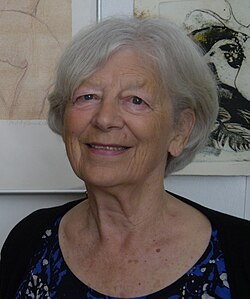It is with deep sadness that we announce the passing of Paddy Summerfield, a pioneering artist celebrated for his innovative use of Japanese Chigiri-e techniques in abstract and figurative art. Summerfield passed away peacefully on July 14, 2025, at the age of 96.
Ceres, CA Mourns the Tragic Loss of Autumn Marie Rose
What Happened to Paddy Summerfield?
Famed for his mastery of Chigiri-e, Summerfield died peacefully, leaving behind a rich legacy that reshaped the boundaries of contemporary art. His dynamic, vibrant approach combined torn, handmade colored paper applied with a carved press and oil-based paints, creating layered, translucent works that conveyed deep connections between nature, technology, and human expression.
Summerfield’s techniques produced ethereal pieces that spoke to the soul, leaving an indelible mark on the global art community.
Who Was Paddy Summerfield?
Born on July 9, 1929, in Hastings, England, to an Irish-English family, Paddy began his creative journey during World War II while working in London making soft toys for Liberty. His passion for art blossomed from these humble beginnings, leading him to study at the Hastings School of Art. He later earned a scholarship to the Vrije Academie voor Beeldende Kunsten in The Hague, Netherlands.
In 1976, Summerfield transitioned to professional artistry, holding his first solo exhibition in Chamonix, France. This pivotal show marked the beginning of his career under French law and launched him as a professional artist.
A central figure in the European development and evolution of Chigiri-e, Summerfield expanded the traditionally floral and scenic technique into abstract and figurative realms, exploring themes such as body language, human-nature relationships, and the interplay between technology and the natural world.
Artistic Career and Contributions
Paddy Summerfield’s career spanned multiple media, including carving, drawing, and monoprinting. He showcased his work in over 40 solo and group exhibitions throughout Europe, including at prestigious venues like Galerie Wind, Kunthuis 18, and Galerie Oeriri in Willemstad, Curaçao.
His exploration of Chigiri-e began in earnest in 1988 in the Netherlands, where he focused on capturing emotional depth and physicality using ultra-thin, hand-torn paper. His gallery/atelier in The Hague, active from 1990 to 1993, became a center of experimentation and creativity, fostering new works and ideas that pushed artistic boundaries.
Public and Art Community Reaction
The international art community has poured out tributes honoring Summerfield’s passing. Fellow artists and fans alike remember him as a trailblazer who fearlessly crossed traditional artistic boundaries and inspired countless creatives worldwide. Many have praised the emotional resonance and technical mastery found in his work, solidifying his status as a beloved figure among established and emerging artists alike.
Legacy and What Happens Next
The Summerfield family plans to honor his legacy through the continued celebration of his art and publications. His recent works, including Bus Left (2025) and The Adventures of Rossi Day Uil (2024), stand as lasting testaments to his dedication to both art and storytelling.
While the family has requested privacy during this difficult time, they welcome messages of tribute and support. Fans and art enthusiasts are encouraged to keep his spirit alive by engaging with his exhibitions, revisiting his published works, and sharing in the enduring beauty of Chigiri-e art.
Conclusion: Honoring a Life Devoted to Art
Paddy Summerfield’s passion for innovation and artistic expression leaves a powerful legacy that will continue to inspire future generations. His work transcended technique and style, embodying a profound dialogue between humanity, nature, and technology.
Though he is no longer with us, his art lives on — a testament to a life dedicated to creativity, curiosity, and connection.
Rest in peace, Paddy Summerfield. Your spirit and your art will live forever.

